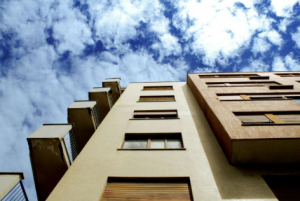Rental demand continues to rise. Last year, the number of U.S. rental households reached a record 45 million, and landlords are seeing the effects of rapidly increasing rents. From 2020 to 2024, rents rose 32% nationwide, with nearly half of renting households now spending more than 30% of their income on rent.
“Fifteen to 20 years ago, there was a classic supply-and-demand dynamic,” says Eric Dunn, director of litigation at the National Housing Law Project. “Tenants could vote with their feet if a market wasn’t favorable. But the market isn’t like that anymore.” Following the foreclosure crisis of the late 2000s, much of the rental stock shifted to large corporate ownership. As a result, vacancy rates and other traditional market signals have less impact, making strategic tenant screening more critical than ever.
While these nationwide trends are important, some states present better opportunities for landlords in terms of affordability, tenant protections, rental availability, and quality of life. ConsumerAffairs recently ranked all 50 states on these factors. Here’s a summary of the key insights for rental professionals.
Key Takeaways
- North Dakota ranks as the top state for renters, providing affordability and abundant rental availability, which translates to lower risk for landlords.
- The Midwest dominates the top 10, with six states offering strong rental markets for property owners.
- California ranks as the worst state for renters, presenting challenges for landlords in affordability and tenant turnover.
The Five Best States for Rental Investment
1. North Dakota — 67.15/100
North Dakota offers affordable rents and high availability, making it a low-risk environment for landlords. Nearly 40% of rental units were built after 2000, and vacancy rates are the highest in the U.S., providing flexibility in tenant placement.
Key metrics for landlords:
- Median two-bedroom rent: $934
- Units built after 2000: 39.4%
- Vacancy rate: 9.3%
2. Iowa — 66.28/100
Iowa provides a stable rental market with moderate rents and strong tenant protections. Laws regulating late fees and partial payments can reduce disputes, while steady rent growth helps landlords maintain predictable revenue.
Key metrics:
- Median two-bedroom rent: $949
- Units built after 2000: 21.3%
- Vacancy rate: 5.7%
3. Wyoming — 61.81/100
Wyoming delivers affordable rents and a relatively high rental vacancy, which eases tenant placement. High quality-of-life scores also make the market attractive to long-term tenants.
Key metrics:
- Median two-bedroom rent: $968
- Units built after 2000: 20.9%
- Vacancy rate: 7.9%
4. Minnesota — 58.23/100
Minnesota combines tenant protections with strong quality-of-life indicators, helping landlords attract reliable tenants while minimizing conflicts and turnover.
Key metrics:
- Median two-bedroom rent: $1,235
- Units built after 2000: 23.3%
- Vacancy rate: 5.1%
5. Wisconsin — 58.23/100
Wisconsin’s rental market offers affordable units and a balanced cost-of-living, though availability is slightly tighter. Strong quality-of-life metrics help landlords retain tenants longer.
Key metrics:
- Median two-bedroom rent: $1,045
- Units built after 2000: 19.9%
- Vacancy rate: 4.7%
The Five Least Favorable States for Rental Professionals
1. California — 34.74/100
California presents challenges with high rents and limited availability, but strong tenant protections may reduce legal risk for landlords who follow the law.
Key metrics:
- Median two-bedroom rent: $1,956
- Units built after 2000: 16.7%
- Vacancy rate: 4.1%
2. Nevada — 37.25/100
Nevada has limited tenant protections, but rental availability remains high due to increased housing stock, making tenant placement easier.
Key metrics:
- Median two-bedroom rent: $1,489
- Units built after 2000: 34.4%
- Vacancy rate: 6.7%
3. Florida — 37.29/100
Florida’s market shows high rent burdens and limited tenant protections, though rental availability remains strong. Landlords should carefully screen applicants to mitigate risk.
Key metrics:
- Median two-bedroom rent: $1,564
- Units built after 2000: 28.9%
- Vacancy rate: 7.6%
4. Louisiana — 37.77/100
Louisiana struggles with high rent burden and low quality-of-life metrics, but high vacancy rates help landlords place tenants. Strategic tenant screening is recommended.
Key metrics:
- Median two-bedroom rent: $1,038
- Units built after 2000: 23.1%
- Vacancy rate: 7.8%
5. Massachusetts — 38.07/100
Massachusetts has high rents and very low availability, requiring landlords to optimize screening processes to minimize vacancy and turnover.
Key metrics:
- Median two-bedroom rent: $1,687
- Units built after 2000: 14.5%
- Vacancy rate: 3.4%
Insights for Landlords and Property Managers
Large-scale landlords and property managers can take these trends into account for risk management and portfolio strategy:
- Screen carefully in competitive markets — states with high rents and limited availability make thorough tenant screening critical.
- Leverage tenant-friendly laws — understanding state-specific protections helps mitigate legal and financial risk.
- Consider market trends — rising rents and low vacancy rates require strategic pricing and lease planning.
- Document everything — maintain records of leases, tenant communications, and maintenance requests to protect against disputes.
By combining market knowledge with effective tenant screening, rental professionals can make informed decisions that reduce risk, optimize occupancy, and improve long-term returns.






